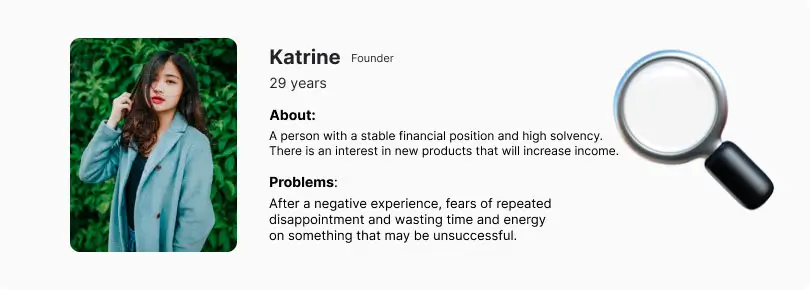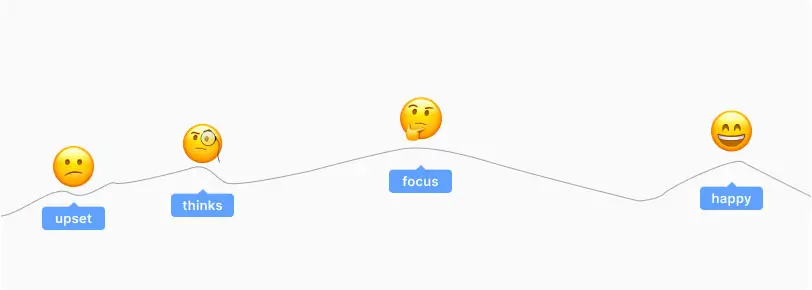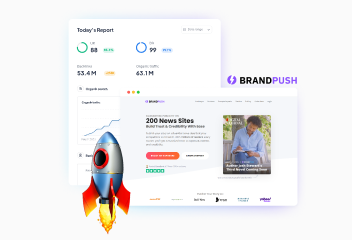Understanding your target audience: key steps and strategies
The heart of your business is your target audience. This axiom needs to be realized and accepted as a given. After all, people are the very resource that allows your business to grow and move forward. That’s why it’s so important to know everything about them, from their needs to how they breathe.



What is a target audience?
So, what is a target audience? These are people who are grouped together in certain groups or segments based on various similarities. That is, you need to focus on the needs of potential customers by offering them relevant products or services. The target audience can be both individual users and companies.
Understanding who your audience is will help you choose a strategy for promoting your business. You will be able to focus on one thing and not be torn between a huge number of people who may not even be interested in your services because you are not fully immersed in their understanding of their problems and needs.
To realize the importance of understanding and choosing the right target audience, let’s look at a good example from New Coke by Coca-Cola. In 1985, Coca-Cola decided to change its original formula of the drink to a sweeter version, which, according to consumer taste studies, would meet with approval among a wide audience. However, Coca-Cola underestimated the emotional attachment of consumers to the original formula. The public reaction was negative, with consumers expressing their dissatisfaction and demanding the old flavor back. This incident became a classic example of how misunderstanding the target audience can lead to marketing failure.


What should the target audience be?

The target audience of your website may be different, but it must meet certain criteria. The main mistake companies make when creating a portrait of their target audience is to try to reach as many people as possible. However, it is important to understand that your product or service will not be suitable for everyone.
Accordingly, your audience should be interested in your products. This can only be achieved by understanding their needs and problems that you can solve.
Your potential customers must also be solvent. When setting a price for a product or service, you need to understand who you are selling it to and what their income is. After all, even if you have the most ideal and suitable product, if its price does not correspond to a person’s earnings, they will not buy it. Accordingly, you will suffer losses.
Last but not least, your target audience must be receptive to advertising. Nowadays, it is difficult to attract people who already use certain products from another company. Therefore, you need to be competitive, inspire trust in the audience with the right promotion strategy, and show your authority not only to users but also to search engines.


Why is it important to identify the right target audience?

Understanding your target audience is one of the most important aspects for the success of your business or project promotion. After all, knowing your customers’ preferences, you can build a strategy and create content that is relevant and informative to the needs and expectations of users. This means that your offers to your potential audience will be more personalized, which will affect demand and sales. After all, everyone wants their preferences to be respected and distinguished from others, which emphasizes their peculiarity.
Thanks to this approach, the customer’s trust and loyalty to your brand increases. After all, you speak their language, understand and care about their needs, and offer effective and high-quality solutions. And if your business is credible in the eyes of your target audience, search engines consider your website reliable, so your ranking positions increase and you attract organic traffic.
Correctly identifying your target audience helps you avoid wasting resources on ineffective promotion methods. You can focus your efforts and budgets on the channels and tactics that work best for your audience, maximizing your return on investment.


Types of target audience
Target audiences can be classified according to various criteria, which allows you to more accurately identify and understand potential customers or consumers. Here are some of the main types of target audiences:
- Demographic audience, i.e. classification by age, gender, income level, education, marital status, etc. This is one of the most common ways of segmentation because demographic characteristics are easy to collect and analyze.
- In psychographic segmentation, the audience is analyzed by values, beliefs, interests, lifestyle, and other characteristics. This classification helps to understand why people make certain choices or prefer certain products.
- Classification by location, such as country, region, city, or even neighborhood. After all, geographical factors influence consumer needs and behavior, for example, due to climatic conditions or regional cultural characteristics.
- Segmentation by audience behavior, i.e., their habits, purchase history, frequency of use, and other factors, which allows you to adapt your promotion strategy to the specifics of consumption and interaction with the product.
Each type of target audience has its own characteristics and requires a specific approach to your website promotion strategy. Choosing the right target audience and understanding its needs is key to a successful marketing campaign.

Increase visibility
for your business: SEO solution for growth!


How to define your target audience

There are many methods for defining your target audience that can be used in certain situations. One such effective approach to segmenting and defining your target audience is the 5W method. It consists of 5 specific questions, the answers to which give you a deeper and better understanding of who your potential customers are and how best to interact with them.
- Who: Identify who your target audience is. Who are these people? What are their demographic characteristics (age, gender, education, profession, etc.)? What do they do for a living? What are their interests and habits?
- What: What are they buying or might be interested in buying? What products or services do they need? What do they value about the products/services they already use? What might motivate them to change their habits or preferences?
- Why: Why do they make their choices? What are the motivations behind their buying decisions? This may include needs, wants, values, or even social and cultural factors.
- Where: Where does your target audience usually buy? This can be in online or offline stores, through social media or specialized platforms. Where do they look for information about products or services? This aspect helps to understand which communication and distribution channels will be most effective
- When: When is your target audience shopping or most open to information? This may depend on the time of year, month, week, or even day. Understanding the timing helps you optimize your marketing and advertising campaigns for maximum effectiveness.
Identifying your target audience is an iterative process that requires constant research, testing, and optimization. By using a combination of qualitative and quantitative data, you can create a clear understanding of your potential customers and develop more effective marketing strategies to engage them.


Additional strategies and methods for finding and understanding the target audience
Market segmentation and creating a customer profile
In order to properly collect information about your target audience, you need to divide the entire market into smaller groups based on demographic, geographic, psychographic, and behavioral criteria. This is necessary to identify segments that are more relevant to your products or services. Based on this data, a detailed portrait of the ideal customer for your business is developed.
Competitor analysis
To expand and learn more about your target audience, you should analyze your competitors’ customer base and their traffic acquisition methods and strategies. Study how they position their products or services and which segments they target.
Surveys and social media
Another way to understand the needs of your audience and your advantages or disadvantages is to conduct a survey among existing customers or organize a focus group to get deeper and better data. Also, you shouldn’t forget about analyzing data from social media, as this is where you can track mentions of your company, explore your customers’ profiles, and see their real reactions to your product.
Use SEO tools to analyze data
Thanks to tools that track your website’s SEO performance, you can learn more about the interests and needs of your target audience. For example, researching and selecting keywords to optimize your content for potential customers’ requests.

Increase visibility
for your business: SEO solution for growth!


Conclusions
Regularly auditing your target audience and updating information to suit it will help you adapt your website promotion strategies and improve the engagement of potential customers in your business.
You may also like it

Brand identity: The key to brand recognition and SEO success
Every product has its own unique feature that sets it apart from other brands. It could be a special font, a unique mascot, or an interesting logo with the right...

What is a dynamic URL and its impact on SEO
A dynamic URL (Uniform Resource Locator) is a web address that changes depending on the user's request or specific parameters. It differs from a static

Press releases as an important part of your SEO strategy: Brand Push Services
SEO is the best promotion on the Internet that helps attract more potential clients and improve your market position. The use of press releases is an important SEO...












